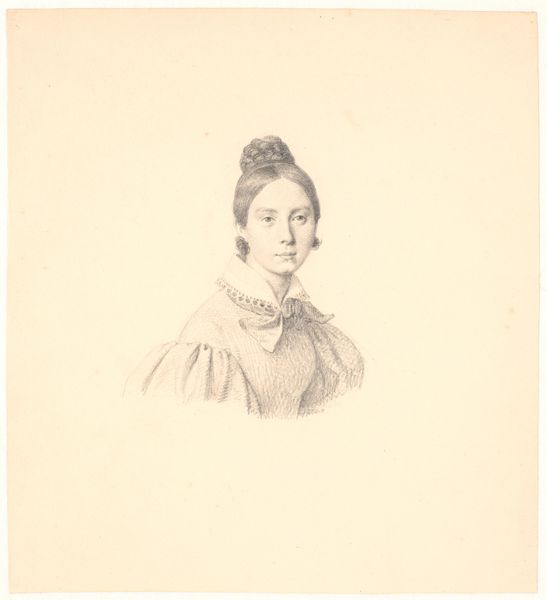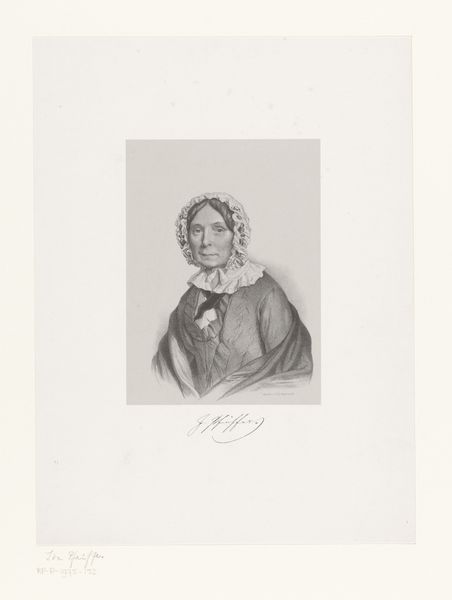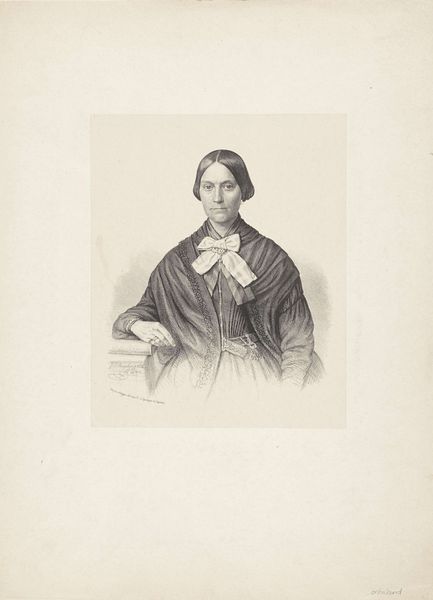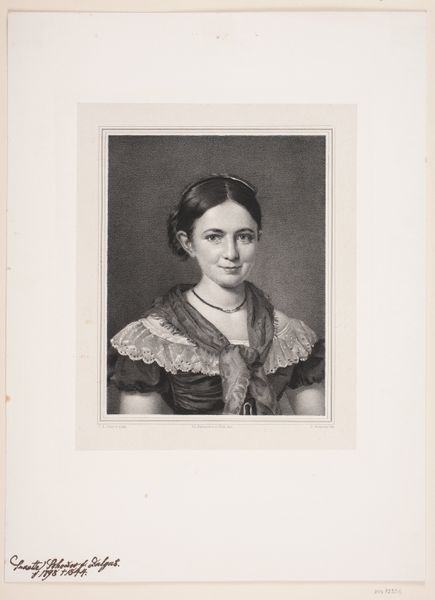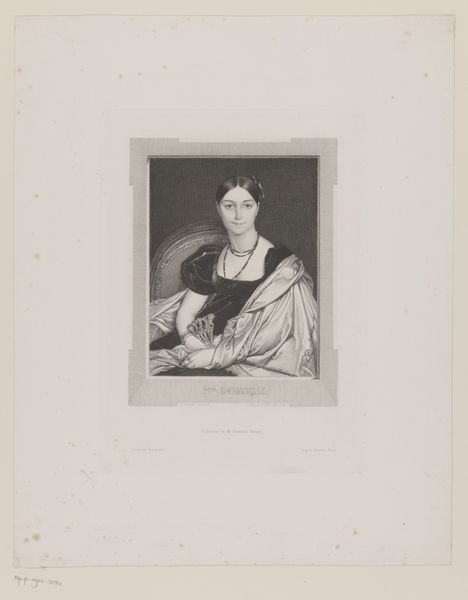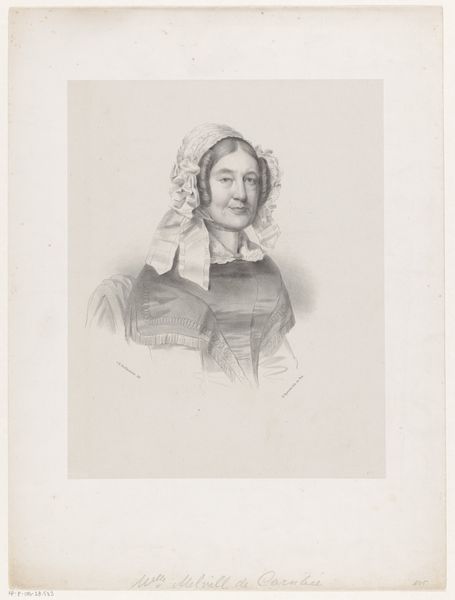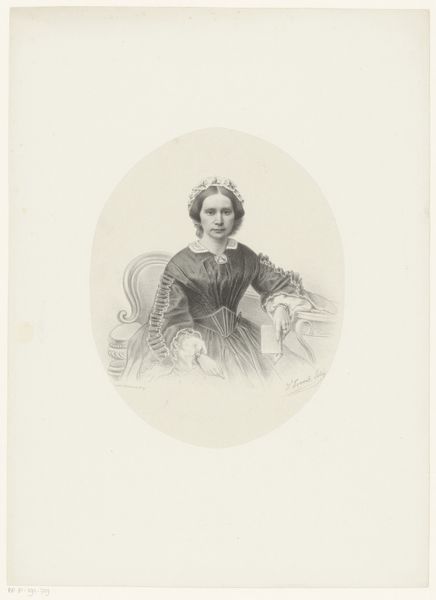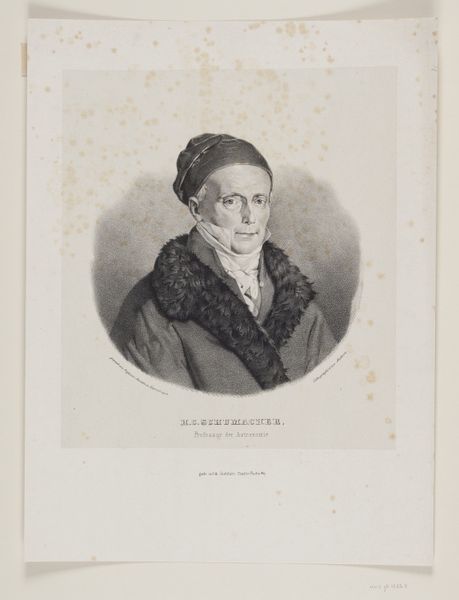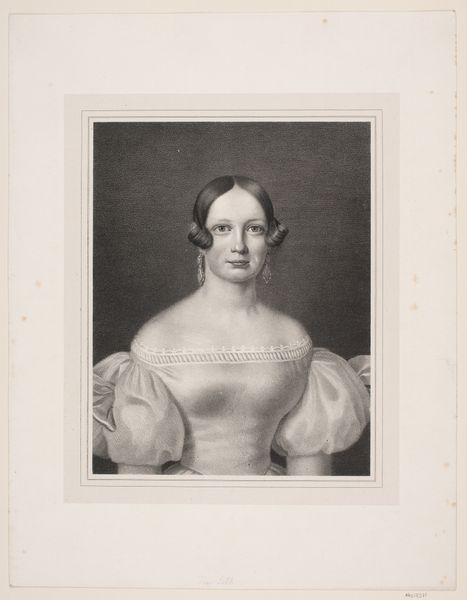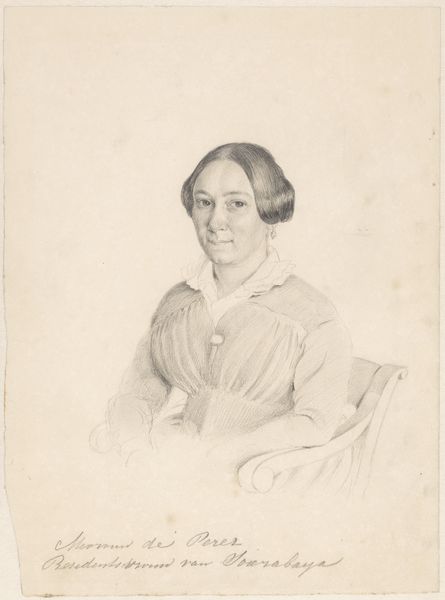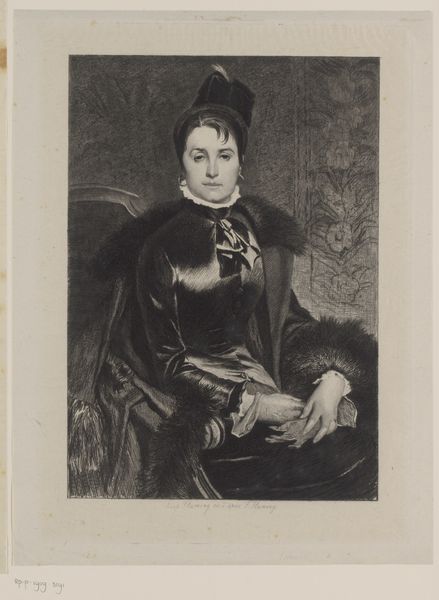
drawing, pencil
#
portrait
#
pencil drawn
#
drawing
#
pencil
#
portrait drawing
#
academic-art
#
realism
Dimensions: height 440 mm, width 297 mm
Copyright: Rijks Museum: Open Domain
Curator: Let's discuss Christian Heinrich Gottlieb Steuerwald's 1848 pencil drawing, "Portrait of Christina Geertruida Spakler." Editor: It strikes me as restrained, almost severe, yet beautifully composed. The subtle gradations in the shading give it a gentle luminescence. Curator: Absolutely. Consider that a work like this reflects the evolving market for art. As the middle class grew, so did the demand for portraiture. Pencil drawings, like this one, provided a more affordable alternative to painted portraits, democratizing access to representation. Editor: I see what you mean, but I’m also drawn to the internal visual relationships—the echoing curves in her shawl, the fall of her hair, and the lace collar. The artist used line to define the planes of her face so deftly, there is also such clarity in her gaze! Curator: I agree that the line work is masterful! It's worth noting the socio-economic context embedded in the material itself. Pencil, composed of graphite and clay, was increasingly mass-produced during this period. This piece gives access to understanding the artist's craft but also broader societal shifts towards industrialization. Editor: A formal counterpoint might be made of the texture within the pencil strokes, the rough next to the refined, a delicate equilibrium between reality and its aesthetic representation. Curator: Yes, that tension also mirrors Spakler's societal position. Her clothing and accessories indicate middle-class prosperity, reflecting the aspirations and values of the era. The detail lavished on these elements serves not just aesthetic purpose, but underlines social identity through material signifiers. Editor: And isn't it compelling how the apparent simplicity of the medium belies the underlying complexity of its rendering! We have here more than just a depiction, this feels more like presence. Curator: Precisely. Through meticulous rendering in accessible material, Steuerwald captures a moment in time and conveys societal changes that continue to resonate with us. Editor: Well, viewing the artwork in that light truly elevates its value beyond its immediate aesthetic appeal.
Comments
No comments
Be the first to comment and join the conversation on the ultimate creative platform.
